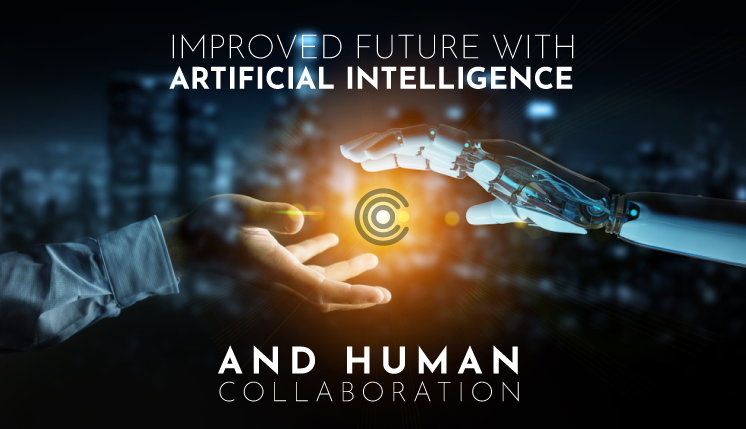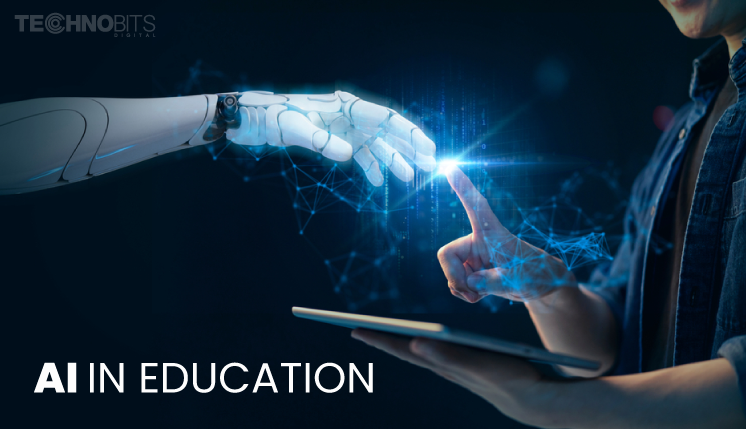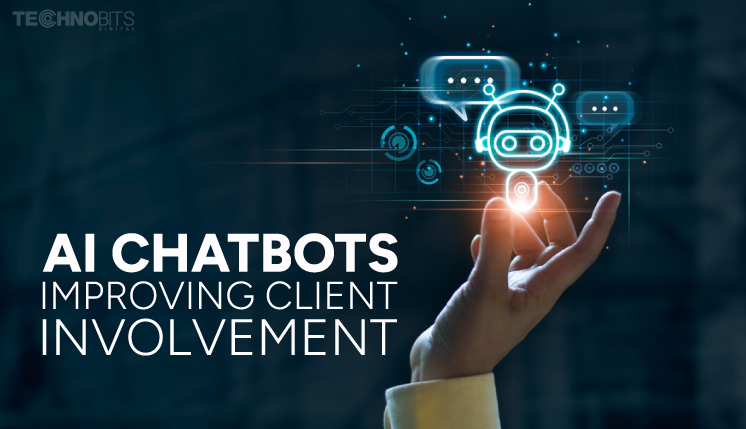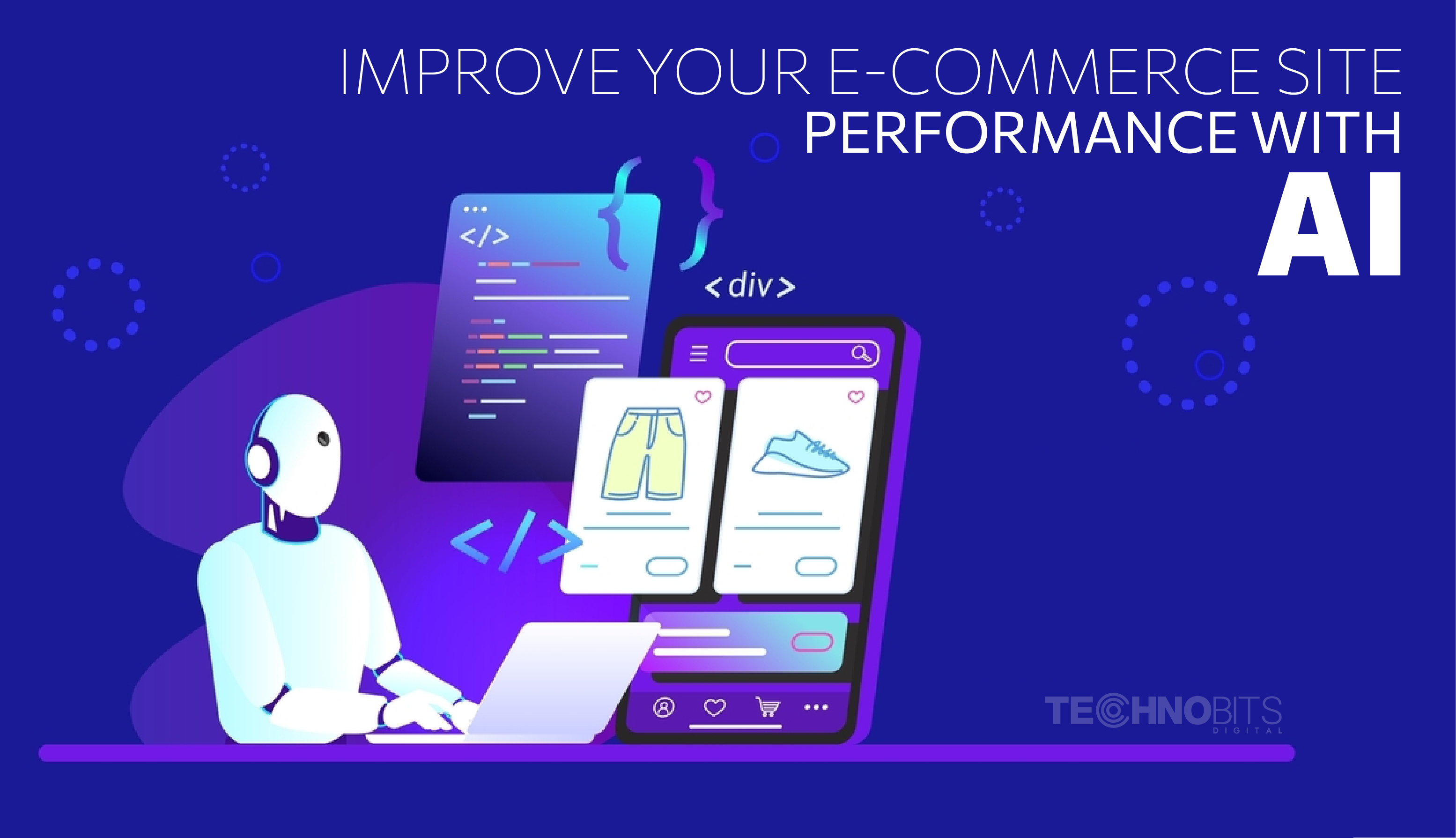Blog Detail
ChatGPT Vision: Transforming Real-World Interaction.
Chat Gpt
Nov 02 2023
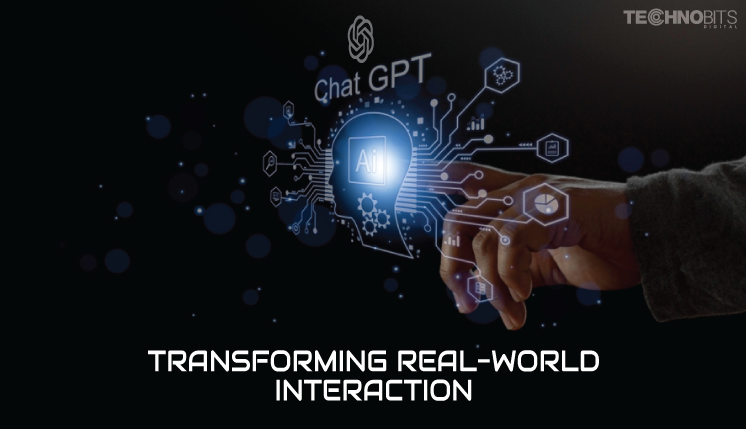
OpenAI's ChatGPT has taken a significant leap forward with its "Vision" feature in a world driven by artificial intelligence. If you want to comprehend this advanced capability fully, this article is your ultimate guide. The Vision feature marks a pivotal moment in AI development, allowing ChatGPT to see and understand images, expanding its utility across various industries.
Leveraging AI in content creation and creativity is paramount in today's digital landscape. The Vision feature promises to reshape how we generate, interpret, and interact with content. Its significance lies in its potential to benefit diverse industries and applications, from healthcare to content creation and product management.
- AI Advancement: With the help of its Vision function, OpenAI's ChatGPT has advanced artificial intelligence to a notable degree. The innovation has opened up exciting possibilities in the field of AI capabilities.
- A Revolution in AI: The Vision feature represents a revolutionary development, not just an evolution. I have updated the capitalization of the first letter in the sentence and added a comma after "development" for clarity. It empowers ChatGPT to not only process text-based language but also to see and understand images. The current advancements in AI capabilities represent a significant transformation in the field.
- Reshaping Content Creation: The Vision feature's significance extends to content creation and imagination. AI is crucial in reshaping content generation, interpretation, and interaction in today's digital landscape.
- Diverse Applications: The potential of the Vision feature is vast and diverse. Instead, it can benefit various industries, from healthcare to content creation and product management.
Understanding ChatGPT Vision
What is the ChatGPT Vision Feature?
The ChatGPT Vision feature is a revolutionary development in AI, enabling it to process visual content and text-based interactions. This transformative integration allows ChatGPT to become a multisensory AI, bridging the textual and graphical information gap. ChatGPT's Vision feature empowers the AI to be a storyteller who can vividly describe and interpret visual cues. It can "see" images and "understand" charts, making it proficient in weaving narratives encompassing text and graphic elements.
ChatGPT's Vision feature has vast and significant practical applications. It enables content creation seamlessly integrating visuals, resulting in informative and captivating articles, reports, and documents. Additionally, this feature enhances document comprehension by providing valuable insights into the visual components, making interpretation and analysis more accessible.
This feature has far-reaching implications across various domains. Visuals are included to captivate and enhance content. It aids in data analysis by providing additional insight into visual data. ChatGPT's Vision feature is revolutionary, providing easy access to multimedia content.
The Technology Behind It
The ChatGPT Vision feature combines deep learning and neural network elements. These components enable the model to analyse visual data that parallels human image interpretation.
Some of the essential technologies being used are Convolutional Neural Networks (CNNs) and transformer models. CNNs excel at image feature extraction, allowing ChatGPT to identify patterns, objects, and context within images. Transformer models enable the model to seamlessly process and integrate textual and visual data, resulting in a comprehensive understanding of information.
Understanding this technology is pivotal in comprehending the depth of ChatGPT's capabilities. It represents a convergence of AI domains and signifies a substantial step towards more human-like AI interaction, where AI understands what we say and show.
- Convolutional Neural Networks (CNNs): CNNs are foundational in the Vision feature. They are renowned for their prowess in image feature extraction. These networks recognize intricate patterns, identify objects within images, and grasp contextual relationships among visual elements. This expertise allows ChatGPT to navigate the visual world with a keen eye, providing valuable insights into the content of images.
- Transformer Models: ChatGPT's Vision feature heavily relies on transformer models. Their exceptional capacity to process and seamlessly integrate textual and visual data is a game-changer. This integration allows for a seamless integration of text and images, resulting in a holistic understanding of information. The Transformer model allows ChatGPT to analyse text and images in unison, comprehensively comprehending the content's context.
Understanding these AI technologies is crucial to grasp ChatGPT's human-like interaction. This means ChatGPT comprehends what we express in text and interprets the visual cues we provide. This convergence of AI domains is instrumental in breaking down barriers between humans and AI, enabling a more natural and intuitive interaction where the AI understands both our words and the images we present.
Applications of ChatGPT Vision
Content Creation and Enhancement
ChatGPT's Vision feature revolutionises content creation. It can generate visually engaging articles, blog posts, and reports by seamlessly merging text and images. Thanks to this revolutionary integration, content producers may now create complex multimedia storylines that are more interesting and educational. Furthermore, the Vision feature extends its utility by creating content outlines. Authors and content creators can leverage this to streamline creativity and structure their writing. ChatGPT is an exceptional tool to create compelling, visually-enhanced content that helps connect with the audience.
- Visual Integration: Text and image integration is made possible via ChatGPT's Vision function. It possesses the unique ability to generate visually engaging articles, blog posts, and reports. Content designers can create multimedia narratives that are both visually appealing and educational by fusing pertinent pictures with textual content. This approach effectively conveys complex information and makes it more accessible to a broader audience.
- Rich Multimedia Narratives: Content creators can enrich their narratives with the Vision feature. Visual elements like images, charts, and diagrams can be effortlessly integrated into the text. This multimedia approach enhances the overall quality of content, making it more engaging and more accessible to comprehend. It's particularly beneficial in fields that rely heavily on data visualisation, like data analysis, marketing, and education.
- Content Outlines: Beyond creating full-fledged content, the Vision feature extends its utility by offering content outline generation. Authors and content creators can leverage this functionality to streamline the ideation and structuring of their writing. ChatGPT helps in the planning and conceptualization stages by providing a well-organised outline, making the writing process more efficient.
- Enhanced Connection with the Audience: ChatGPT's Vision feature is a valuable tool for content creators aiming to connect with their audience. Visually enhanced content attracts readers' attention and facilitates better understanding. It's particularly effective for marketing materials, educational resources, and content where clarity and engagement are paramount.
PRD Creation and Product Management
In product development, Product Requirement Documents (PRDs) are indispensable for outlining the features and functionalities of a product. ChatGPT's Vision feature is pivotal in enhancing the PRD creation process, bringing efficiency and clarity to product management.
- PRD Streamlining: ChatGPT's Vision function expertly analyses and interprets product-related photos and charts. This capability simplifies PRD preparation by automatically extracting meaningful information from visual assets. Whether it's graphs illustrating user data or schematics of a new product design, ChatGPT's ability to understand and convert these visuals into text expedites document creation.
- Efficiency and Precision: The streamlined PRD creation process leads to greater efficiency in product management. Product teams can save time and resources that would be spent manually transcribing visual data into written descriptions. Moreover, converting images and charts into text ensures precision and consistency in documenting product requirements.
- Effective Communication: PRDs bridge the product vision and its execution. The clear and detailed PRDs facilitate a shared understanding of project goals, reducing misunderstandings and enhancing collaboration.
Implementing ChatGPT Vision
Practical Steps for Utilisation
Users, such as educators, product managers, and content developers, can take a strategic approach to utilise ChatGPT's Vision function fully.
The following practical steps, tips, and best practices can guide them in the effective utilisation of this transformative capability:
- Understand the Feature: Begin by comprehensively understanding ChatGPT's Vision feature. Explore its capabilities and limitations. This understanding serves as the cornerstone for successful execution.
- Define Use Cases: Determine which particular use cases fit your objectives. Whether it's content creation, product management, or educational applications, clarity on your objectives is key.
- Collect Relevant Visual Data: Gather visual data relevant to your projects for content creation and product management. This may include images, charts, or other graphic assets.
- Prepare Textual Prompts: Create concise, context-relevant textual prompts. With the help of these instructions, ChatGPT can comprehend visual inputs and produce content.
- Leverage Outlines: Make use of ChatGPT's content outlines feature.
- This is particularly valuable for content creators, as it streamlines the writing process and ensures a logical structure.
- Review and Refine: After ChatGPT generates content, review and refine it to align with your objectives and messaging. This process ensures that the material satisfies your requirements for quality.
- Ethical Considerations: In educational settings, ensure ethical implementation and proper supervision to uphold academic integrity and standards.
- Continuous Learning: Keep current with ChatGPT's latest additions and enhancements. AI is developing quickly, and continual learning is necessary to utilise these tools entirely.
- Experiment and Adapt: Don't hesitate to experiment with different approaches. ChatGPT's Vision feature is versatile, and adapting your results-based methods can lead to better outcomes.
Real-World Success Stories
Real-world case studies and success stories provide compelling evidence of how individuals and businesses have harnessed ChatGPT's Vision feature to drive tangible results. These accounts highlight the revolutionary effects of artificial intelligence (AI) in several domains, providing measurable results that demonstrate the potential of ChatGPT's Vision function.
Now let's explore a few real-life success stories that highlight ChatGPT's incredible impact:
1. Content Creation Reinvented
ChatGPT's Vision function has simplified the content development process in the marketing business. A marketing agency reported a 40% increase in engagement after incorporating visually enriched content generated by ChatGPT. The potential of AI to improve digital marketing initiatives is demonstrated by this success story.
2. Data Interpretation Made Effortless
A data analysis company used ChatGPT's Vision function to understand intricate data visualisations. By describing data charts and graphs, ChatGPT improved data comprehension. This resulted in a 30% reduction in the time required for data analysis, showcasing the practicality of AI in data-driven industries.
3. Accessibility Breakthrough
An accessibility group used ChatGPT to give visually challenged people descriptions of images. ChatGPT made websites and mobile applications more accessible by providing real-time image descriptions. This success story reflects the positive impact of AI on improving accessibility for all.
4. Rapid Legal Document Review
For reviewing legal documents, a law company integrated ChatGPT's Vision feature. ChatGPT analysed legal documents, identified relevant sections, and generated concise summaries. This led to a 50% reduction in the time required for document review, showcasing the potential of AI in the legal domain.
5. Visual Learning in Education
ChatGPT improved students' understanding of complex subjects by generating detailed explanations of educational visuals.
6. Transforming Healthcare Accessibility
Within the healthcare sector, ChatGPT has evolved into a vital lifeline for both healthcare professionals and patients. It seamlessly interprets X-rays, prescriptions, and medical reports, making healthcare more accessible and understandable. This innovative application bridges the gap between medical experts and patients, facilitating faster, more accurate diagnoses and enabling people to decide on their health with knowledge.
7. Eroding Linguistic Boundaries
The constraints of language are no longer a hindrance to effective communication, thanks to ChatGPT. It transcends language barriers and effortlessly deciphers perplexing handwriting, making global communication seamless. This feature is significant for international businesses, fostering global collaborations and enhancing personal interactions.
8. Reshaping Digital Platforms
With its "Screenshot to Code" expertise, ChatGPT is leading the charge to transform the digital landscape significantly. It can easily convert website, application, or dashboard screenshots into usable code.
This innovation streamlines app development and web design, opening new horizons for digital recreation. Developers and designers can now simplify their workflows, making creating and modifying digital platforms more efficient. The possibilities are boundless, and the synergy between human creativity and AI technology reshapes the digital landscape.
9. The Future of AI-Powered Content Creation
The future of AI-powered content creation is a dynamic and ever-evolving landscape, and at the heart of this transformation is ChatGPT's Vision feature.
What does the future hold for AI-powered content creation?
1. Enhanced Personalization
AI systems like ChatGPT are poised to understand individual users better. They will tailor responses to their preferences, creating content that resonates personally. This move toward hyper-personalization will completely transform the creation and consumption of material.
2. Industry Disruption
AI has an impact on content creation that goes beyond text generation. AI can also help create beautiful visuals and images for visual content.
This disruption will affect the graphic design, marketing, and advertising industries as AI plays a more significant role in visual content creation.
3. Speed and Efficiency
AI-powered content creation is all about speed and efficiency. ChatGPT can generate content at a pace that human writers can't match. This efficiency will lead to faster content production, offering companies an advantage in the digital market.
4. Collaboration with Creatives
AI tools like ChatGPT will increasingly collaborate with human creatives. Content creators will work alongside AI to enhance their productivity and creative capacity.
5. Cross-Industry Applications
AI in content creation is not confined to a single industry. It has cross-industry applications. From marketing to education, healthcare to finance, AI is revolutionising various sectors by streamlining content creation processes and making information more accessible.
ChatGPT's Vision creates an inspiring future characterised by enhanced personalization, industry disruption, speed and efficiency, collaboration with human creatives, and cross-industry applications.
TAGS
Australia +61 4 7038 7624 India +91 97265 89144
We truly care about our users and our product.


